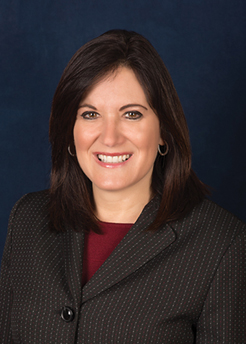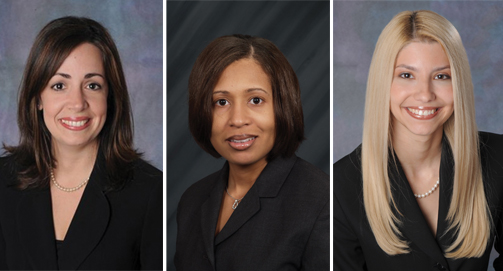
FCAP Community
Published April 2020
Florida Community Association Professionals’ (FCAP) training is offered on two levels. Level one consists of courses meeting Florida’s continuing education requirements for CAMs, and level two is the Florida Advanced CAM Studies (FACS) courses. For further information about the more than 50 online continuing education classes available or to pursue the Certified Florida Community Association Manager (CFCAM) designation, please visit www.fcapgroup.com/membership/education-training/.
Congratulations to CFCAM Juan Mejia!
FCAP congratulates Juan Mejia on his recent completion of the Certified Florida Community Association Manager (CFCAM) certification. According to Juan, the program “was recommended to me by Lisa Pinder; I saw the program as the multi-tool for professional property managers, providing real updated knowledge that can be used for future development.”
Juan became a community association manager in 2007 and a certified property management executive in 2008, but he brings a broad level of experience to the job. Juan received his bachelor’s degree in international business and has extensive experience in hands-on maintenance, ranging from electrical and plumbing work to pools, fencing, and balconies.
Juan says he decided to become a CAM because “I feel the need to give and share social responsibility with the community.” He has served the board of The Gardens of Willow Bend II in various positions and has managed the property since 2014.
“Since 2014, I have helped my community triple our reserves and at the same time advance major projects for the community,” Juan shares. “For seven buildings these projects include new roofs and paint, overhauling of the fire alarm system, replacement of many thousands of plants, overhaul of the sprinkler system, and obtaining an SBA loan for our community under very favorable terms.”
The people who have had the biggest influence in Juan’s life are, he says, “three women: my grandmother, my mother, and my wife, who have showed me what love, kindness, and tenacity are. And, my friend Steven Mayans, who always goes the extra 100 miles physically and intellectually.” In his spare time, Juan enjoys spending time with his family and friends, riding the bicycle, and reading books.
As a CAM, Juan most enjoys “the joy and happiness from a well-completed task.” The challenge of property management is “to adapt to the social changes and to implement the enforcement of new laws that are indispensable for the self-preservation of the community, while making sure that everyone understands the importance of living in a harmonious environment.”
Challenges to CAMs always lie ahead. Juan sees the major upcoming issues to be “tracking changes in laws and updating the documents appropriately, making sure the association purchases the appropriate types of insurances and coverages, and planning financially for upcoming projects in order to maintain property values.”
Juan has taken steps to be ready, and FCAP salutes his efforts!
Because You Asked
By Betsy Barbieux, CAM, CFCAM, CMCA
Betsy,
Are committee members permitted to contact and interview vendors for projects? Also, are committees to circumvent management and send emails directly to the board whereby a manager has no clue? And finally, what does a manager do if the board members are dealing directly with the attorney and not providing management with a record of their correspondence?
– Colleen
Colleen,
These issues with committees you describe are failures of the board to set policies for who, what, when, where, why, and how of committees. There is no law.
– Betsy
Betsy,
This might seem like a dumb question, but where can I find clear language that states the board of directors must formally vote to appoint members to ALL committees? The language I found in F.S. 617 talks about the board establishing a committee by resolution and a majority vote, but once the committee is established, aren’t they still required to appoint members to it when there is a change? We have an HOA that puts out committee sign-up sheets every year at the annual meeting. The board president is questioning us and saying that the only committee where the members have to be appointed by the board is the Architectural Control Committee, and for all the others anyone who volunteers can serve.
– Andrea
Andrea,
There isn’t really any law on committees and how they are solicited or appointed. I want to be clear there is a difference in “clubs” (that call themselves committees) and REAL committees. Real committees are those that support the functions of the board, like the ARC or Personnel, but not social or other common interest groups.
Boards do not need to be involved in the social or common interest groups. They can be their own informally organized groups or more formal with Articles of Incorporation. But no matter how they are organized, they never should use the association’s tax ID number on bank accounts, and they should be self-supporting and not use any association funds (unless otherwise provided in the documents).
Where I live, we used to have interested owners sign up at the annual meeting on sheets of paper, and the board would subsequently review and “appoint” X number of them to the committees. All committee members served one year and then had to sign up and be appointed (or not) again. This kept the same people from going on and on and on…… and never getting off!
I would suggest the board create policies and procedures on how it wants to solicit, appoint, direct, empower, and fill vacancies, etc., and at a board meeting vote on the committee policies and procedures.
– Betsy
Betsy,
Are board candidate information sheets required if there is no election?
– Colette
Colette,
Candidate information sheets are never required even when there is an election. They are totally optional for the candidate to submit or not submit. There would be zero reason to have them if there’s no election. If they do submit one, it can only be one 8 ½ in. x 11 in. paper printed on one side.
– Betsy
CAM to CAM
Insurance Essentials, Part One
Marcy L. Kravit, CMCA, AMS, PCAM, CFCAM
Florida Community Association Professionals (FCAP) Education and Training Coordinator
AKAM On-Site Managing Director
Editor’s Note: This is part one of three on insurance essentials.
Insurance Essentials for Community Associations
Community association managers are responsible for advising and assisting the board in facilitating and implementing the purchase of the association’s insurance coverages. It is also critical that the manager do what is in the best interest of the association to protect and take action in preventing losses, which could lead to increases in financial costs and premiums.
Risk Management
Managers need to analyze the risks and exposure to potential losses. Minimizing exposure to certain types of losses consists of avoiding issues. Loss prevention can be attained by taking the necessary steps in examining potential exposures in maintaining, preserving, protecting, and managing the property at its highest level. The main goal is to manage the property by analyzing potential risks and exposure by performing the following:
Reduce the risk of fires by training staff on how to use the fire and life safety equipment. Specifically, train security and maintenance staff to conduct weekly inspections, including but not limited to inspection/testing of fire alarm panels, fire extinguisher expiration, smoke detectors, speakers, fire sprinklers, dryer vents, electrical equipment, lighting, carpet and tile, cleaning supplies and equipment, mechanical room, exercise equipment, washing machine hoses, plumbing (valves, flappers, p-traps, corrosion of hot water heaters, etc. ) trees, fencing, decks, doors and locks, sidewalks, curbs and drains, leaks, swimming pool/spa and equipment, roof (with maintenance), signage, roof and exhaust fans, valves, and pipes, along with routine preventive maintenance of all systems. Walk the property to inspect for potential hazards, such as slip and fall hazards, and conduct stairwell inspections.
The goal is to minimize property damage, liability, and personnel-related losses. Provide regular and routine safety and PPE (personal protective equipment) training for your staff.
Managers should read the association’s governing documents to determine the insurance coverage requirements and identify the common areas. Check the Florida Statutes to establish the insurance requirements as well.
Coinsurance
To insure for full insurable replacement cost protection, it is standard for the policies to cover an item’s depreciated value, called “actual cash value,” and not its replacement cost. Coinsurance obligates the association to maintain a certain limit of property insurance.
Coinsurance is a word that seems to throw many people off, and it is important to have a clear understanding of it. It is the property insurance provision that penalizes the insured’s loss recovery if the limit of insurance purchased by the insured is not at least equal to a specified percentage (commonly 80 percent) of the value of the insured property.
For example, if a building valued at $250,000 is insured with a policy containing an 80 percent coinsurance clause, the policyholder must purchase at least $200,000 in coverage. If the policyholder purchased less than $200,000, then the policyholder would be responsible for a proportionate share of the loss. Make sure the property limit indicated on the property policy provides for the full insurable value.
Recommended Coverages
Depending on your association’s specific needs, here is a list of some recommended coverages:
Property, wind, boiler & machinery, terrorism, flood, crime & dishonesty bond (fidelity bond), directors & officers liability, commercial general liability, business automobile hired/non-owned, garage-keepers liability, inland marine coverage, cybersecurity, workers’ compensation, glass, association professional liability, umbrella, liquor liability, pollution, mold, bailee coverage, accident coverage and employee benefit liability, and employee practice liability.
It is just as important for managers to educate owners on what the association’s master policy covers (common areas) and does not cover and to encourage all owners to purchase an HO6 policy to protect their personal property and belongings.
In a condominium, I like to use the analogy of considering each unit as a box. Shake it up, and everything inside the box is the owner’s, so the owner must provide an HO6 policy to cover what’s inside.
 FCAP Member Spotlight
FCAP Member Spotlight
Attorneys Ivette Machado Blanch, Caridad Rusconi, and L. Chere Trigg
Named as Partners at Siegfried Rivera
Attorneys Ivette Machado Blanch, Caridad Rusconi, and L. Chere Trigg have been named as partners at the Siegfried Rivera law firm.
Blanch and Rusconi, who both joined the firm in 2005, practice in the areas of community association law and collections. Trigg joined the firm in 2001, and she also concentrates on community association law.
“We are so proud to welcome these incredible attorneys to the ranks of the firm’s partners,” said Steven M. Siegfried, the firm’s founding partner. “They are all extremely dedicated, hardworking attorneys who have become invaluable members of our team.”
In addition to her work in community association law, Ivette Machado Blanch co-authored a chapter in the Third Edition of the Florida Community Association Law Manual published by The Florida Bar, titled “The Role of the Association in Condominium Operations.” She received her juris doctor degree with magna cum laude honors from the University of Miami School of Law in 2005.
Caridad Rusconi assists condominium and homeowners associations in the day-to-day management and operation of their community, as well as in a broad range of general community association matters. She works closely with her clients in drafting and negotiating contracts, and in providing legal opinions and guidance regarding requirements of their governing documents and the law. She received her juris doctor with cum laude honors from Saint Thomas University in 2005.
L. Chere Trigg assists a variety of clients, including developers and community associations, with complex and innovative transactional issues. She has extensive experience with all aspects of condominium and community association law. She received her juris doctor with magna cum laude honors from Southern University Law Center in 2001 and her LL.M. in Real Property Development from University of Miami School of Law in 2002.
Founded in 1977, Siegfried Rivera focuses on all aspects of construction, community association, real estate, and corporate law. The firm provides representation to a diverse client base throughout Florida and the nation, including owners, developers, contractors, and trade contractors building some of the most complex projects in the world, as well as more than 800 community associations. It maintains offices in Coral Gables, Plantation, and West Palm Beach, Florida.
Siegfried Rivera’s blogs are at www.FloridaHOALawyerBlog.com, www.FloridaConstructionLawyerBlog.com and www.FloridaRealEstateLawyerBlog.com. Additional information on the law firm is available at www.siegfriedrivera.com or by calling (305) 442-3334 or toll-free at (800) 737-1390.







